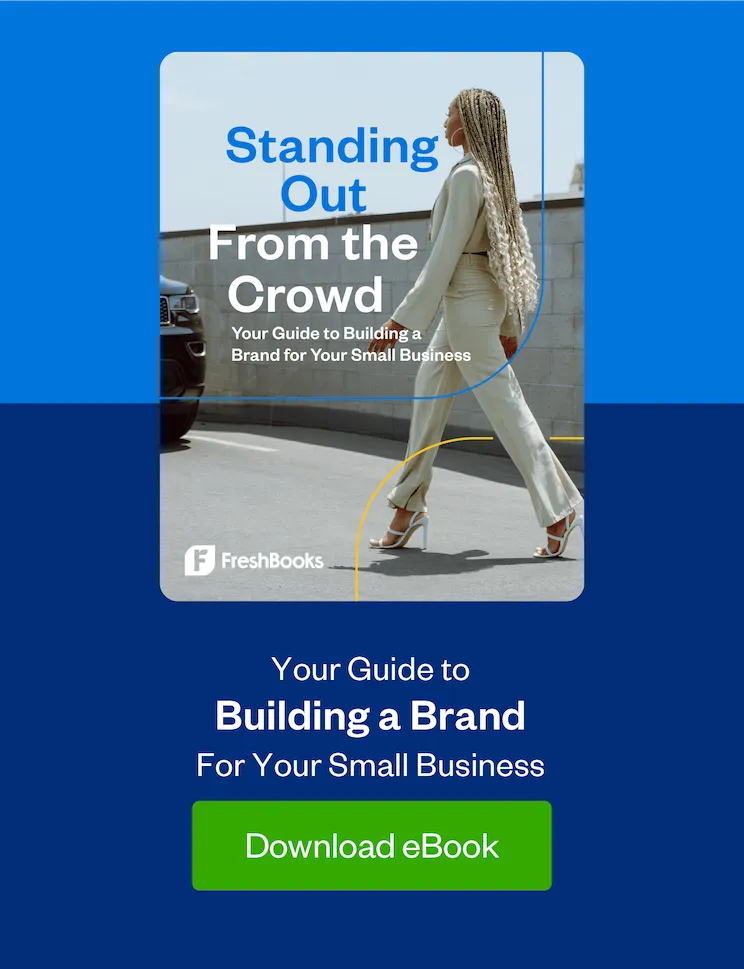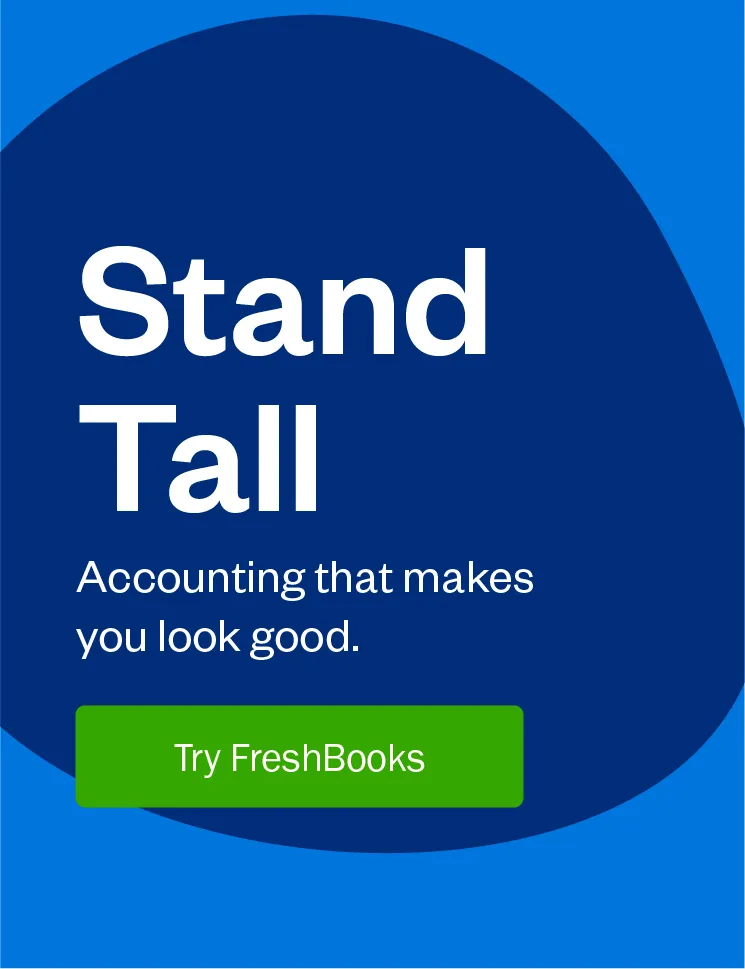Need your first few clients? Want next-level growth? Marketing your small business is the answer.

It’s easy to get so caught up in running your small business that you forget one of the most important parts of your success: Marketing. Whether you need your first few clients or want next-level growth, marketing your small business is the answer.
At a high-level, marketing is all the actions you take to promote and sell your services. But marketing your small business is so much more than this. It’s every single activity involved in getting clients, from branding and advertising, market research and distribution to pricing, building relationships and even how you package your services.
Before You Start Marketing: Think about Your Brand
It’s always a good idea to reflect on your brand before you create your marketing materials. Reflection begins with understanding and articulating what you do, what makes you different or better from your competition, what your purpose is and what your business stands for.
This process is akin to articulating what kind of person you want to be—except you’re doing it for your business. Once you’re clear on your brand identity, you can think about how it manifests itself in colors, typography, style of photography, and even a logo.
You want to understand your brand before executing any marketing ideas because your brand should always be overarching. You might like certain designs, but if they’re off-brand, you shouldn’t use them. Or you might think a particular strategy would drive results, but if it goes against your identity, you might want to take a different approach.
Once you’re clear on your brand and how it manifests itself across your business, it’s time to think about what marketing strategies will help drive business results.
Strategy #1: Build a Website
The first strategy for marketing your small business is to create a website. A website makes you look like a professional, is a place to house your online portfolio and can help you get found in search engines for specific keywords.
The goal of a website is to provide enough information to help prospective customers:
- Get a sense of who you are (both your brand and the person behind the brand)
- Understand what services you provide
- See the right examples of work to help determine whether you’re a fit for their needs
- Easily contact you to discuss their projects
- Determine whether your services fit their budget if you choose to display rates on your site
Remember: If they can’t find your website, they can’t move through these steps. That’s why optimizing your site for search engines and ensuring it ranks in your service area is crucial.
Strategy #2: Create Social Media Profiles
Like creating a website, having a social media presence is crucial today. Not only does it help amplify your brand, but it’s a superb way to connect with potential clients and win new business.
There are many social media platforms, so choose wisely: Start with those that are a brand fit and are where your customers hang out. For example, if you’re a photographer or interior designer, Instagram would be ideal. Similarly, if you’re a copywriter or business consultant, LinkedIn may be the better option to connect with clients who need your services.
Succeeding on social media is not just about “broadcasting” your content. You also want to actively engage your followers to create connections and grow your following. You might even want to boost specific posts to beat the algorithms and achieve greater visibility.
Strategy #3: Use Content Marketing
Content marketing is the creation and distribution of online content like blog posts, videos, webinars and even eBooks. The goal is to promote a brand and get customers to ultimately use and pay for a product or service.
Content can also feed Google: If you understand the kinds of things your market is searching for, you can write content to help your website rank for those keywords.
Say, for example, you build pools for a living. This is the kind of purchase people spend a lot of time researching before committing to. They might research things like:
- In-ground versus aboveground pools
- Saltwater versus chlorine pools
You probably already know a lot about these topics. If you write blog posts for these kinds of search queries, you’ll build your subject matter expertise and also stand a chance of ranking in Google. That means more traffic will come to your site. And more traffic usually means more business.
Content can also help you build your authority. If you’re a business consultant, having an interesting or disruptive opinion on a current trend or movement can help you attract a large following. This all translates into people perceiving you as an expert and wanting to work with you.
To get started with content marketing:
- Define your audience
- Choose your budget for content
- Decide on a blogging schedule
- Select topics
- Conduct keyword research using Google Keyword Planner to determine what search queries people are typing into Google
- Write and optimize the content or outsource it to a writer
- Add calls to action on your posts
- Promote and share your content
- Track and analyze the performance of your posts using Google Analytics
Strategy #4: Use Google Local Services Ads
Local Services ads are the digital ads found above Google ads in search results. These ads are also paid for, but unlike Google ads, they appear specifically in response to local search queries like “landscaper for hire in Boston.”
With more and more people searching for and booking services online, Local Services ads are an ideal way for home service businesses like landscapers to get more clients through search engines.
Other benefits of Local Services ads include being able to pay per lead and not per click, and having full control over your advertising spend.
Get started with Google Local Services ads by following these steps:
- Check that you’re in an area supported by Google Local Services ads. Not all regions are supported, but a quick search of your profession and area will reveal your eligibility
- Go through the screening process, which involves a background check
- Create your first ad if you meet the requirements and pass the check
- Create your business profile
- Obtain a Google Guarantee, which is a stamp of trust from Google
- Log in to the platform to create your first ad
Strategy #5: Create an Email Newsletter
Once people are following you on social media, you’ll want a way to nurture them. You also want to make sure that those who visit your website after reading a blog post don’t simply disappear and forget about your brand as quickly as they discovered it.
Email marketing allows you to maintain this contact with your audience. There’s no algorithm to beat and you deliver your content right to their inbox every week or month.
One thing is important: Make sure you obtain consent when collecting email addresses. It’s not cool to simply spam people just because you happened to obtain their addresses.
To get going with creating your first email newsletter:
- Start building a list of contacts. If you’re an established business, reach out to existing customers who you work for and ask if they’d like to join your list. Mention what they can expect to receive from the newsletter, that they are under no obligation to join and that they can unsubscribe at any time.
- Decide on a publishing schedule, e.g., weekly, bimonthly or monthly. At the very least, you should send a monthly newsletter, so you don’t dilute its effectiveness at staying in touch.
- Choose content topics. The content should be tailored to your audience. What problems or challenges do they have? To get this information, think back to conversations you’ve had with clients and about the common questions they ask. Or, create a short survey of five questions that can help you determine some of their problems. And remember, the content you create doesn’t have to be mind-blowing. The main goal is to remain top-of-mind, so keep it simple, e.g., share a small tip or write a short post.
- Use email marketing software like Mailchimp or Aweber to send your email to your list instead of having to write and send emails one by one. If you’re just getting started, try Mailchimp as it’s free when you have fewer than 2,000 subscribers.
Strategy #6: Ask for Referrals
Referrals are a powerful way to get new business as people trust recommendations from a friend. Contrary to what you might think, though, you don’t have to wait for referrals from clients. You can actively seek them by asking. Just make sure you do it the right way.
First, ask at the right time.
Don’t ask right at the beginning of a relationship. Instead, deliver quality work over months, build trust and get constructive feedback. Then, once your relationship has developed enough, ask.
Determining when you’ve reached this point can be tricky, but usually you’ll know. For example, if your client always praises your work or you’ve reached a significant milestone like working for them for six months, then it’s probably the time to ask.
Secondly, ask the right way by personalizing your email, keeping it on a lighter note and being specific in your request. Being specific is especially vital because clients are busy. You don’t want to create extra work for them by being vague and having them try to decipher what you want. For example, if you’re a landscaper, you may ask the client, “Do you know anyone who needs their lawn mowed in Chicago?”
To learn more about how to ask for a referral and to receive an example referral email you can use, read Asking for Referrals: How to Do It the Right Way.
Strategy #7: Use Co-Marketing
Co-marketing involves working with another business on a marketing campaign/activity/strategy that promotes both businesses.
For example, a copywriter and designer may choose to co-market each other’s services. For example, the designer might put on their website: “Writers I recommend you work with …” and vice versa. Or they may offer each other support and praise on social media. This helps you reach another (complementary) business’ audience and get your name and message to travel further.
Just think about how often we all use this in real life. We look at another freelancer’s website and ask them who designed it. Or we work with a client and they ask if there’s anybody they should work with on another aspect of the same project.
Regardless of the exact arrangement, co-marketing suits small businesses because they often have limited resources, time and money.
To get started with co-marketing, think about those services that complement your existing ones and can be sold to your clients as part of a package. Once you’ve chosen those services, find the ideal partner, come to a quid pro quo agreement and start packaging.
Strategy #8: Package Your Services
Packaging your services involves bundling together services and charging one price, or presenting different service packages alongside each other to give clients more choice.
For example, you could offer a lite, medium or premium package with each option offering incrementally more value than the next.
By packaging your services, you productize them, which helps you sell more. Clients will also spend more time comparing your packages against each other instead of going to the competition.
To get started with packaging your services:
- Collect information from your competitors, business and customers to narrow down the list of services you want to offer
- Build your packages by either bundling services together, packaging a service process or offering multiple options alongside each other
- Follow these guidelines when constructing your packages:
- Optimize packages by making sure they include features that matter to your audience
- Be specific so that clients know what’s included in the packages and you avoid scope creep
- Spend time naming your packages so that they’re memorable
Don’t forget to correctly price your packages so that they are profitable. For example, the price jumps between packages should accurately capture any extra value you provide. If the increments are too big, clients will only focus on the cost and not the value.
The Bottom Line on Marketing Your Small Business
Marketing is more than just promotion and selling your services. It’s about brand positioning, market research, pricing your services, staying in touch, wowing customers and building relationships.
Once you realize this, you can arm yourself with the right marketing strategies to grow your small business.
Webinar: From Shoestring to Scaling: Improve Your Marketing Strategy on Any Budget
This post was updated in February 2020.

Written by Nick Darlington, Freelance Contributor
Posted on June 24, 2014

 Asking for Referrals: How to Do It the Right Way
Asking for Referrals: How to Do It the Right Way 5 Tactics to Build a Bigger Email List for Your Small Business
5 Tactics to Build a Bigger Email List for Your Small Business No Time for Content Marketing? Consider Outsourcing Instead
No Time for Content Marketing? Consider Outsourcing Instead



![Standing Out From the Crowd [Free eBook] cover image](https://prod-blog-k8s.freshenv.com/blog/wp-content/uploads/2022/05/Standing-Out-From-the-Crowd_eBook-Blog-Hero-Image-226x150.png)

